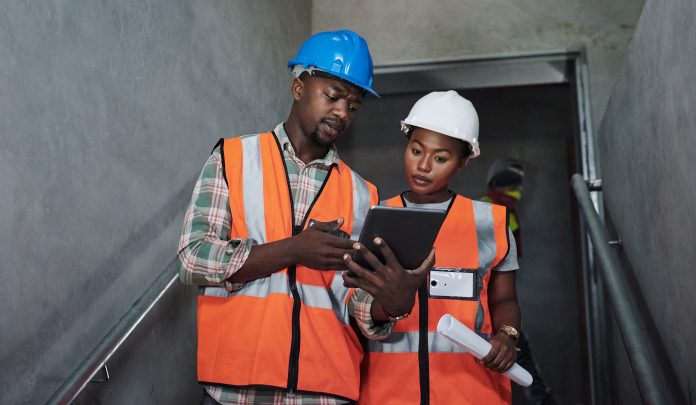Understanding the reasons for the lack of women in the construction industry, and how digitisation can solve these issues, has never been more important, explains Hollie Russell, marketing director at YardLink
October marked ‘Careers in Construction Month’, and attention turned to the sector’s skills shortages and the need for over a quarter of a million construction workers by 2026. The skills shortages, combined with industry growth slowing, mean increasing the representation of women in the construction industry has never been more important.
Even today, in 2022, women make up just 11% of the construction industry.
There are a few different reasons for the lack of gender diversity experienced throughout the sector – and by understanding some of these reasons, we can start to drive change and encourage women to join the construction industry.
Reasons for lack of gender diversity in the construction industry
First, there is often less space for innovation within long-established and large companies, such as the construction sector. While other industries have advanced towards a more diverse workforce and benefited from different ideas and skill sets, the construction industry has been a little slower to adapt due to legacy processes and practices.
The second reason is that the construction industry hasn’t been able to introduce flexible working in the same way many other industries have. This is part due to the very nature of the industry and the need to be ‘on site’.
As an industry, we must come together to introduce fresh perspectives and new approaches by boosting gender diversity, which in turn will attract more talent and increase profitability. Digitisation is key. Not only will it increase the number of opportunities for women, and unlock new progression paths, it will help ensure the construction industry thrives in the future.
Increasing diversity increases profitability
McKinsey research shows companies in the top quartile for gender diversity on executive teams were 25% more likely to have above-average profitability. With the effects of a looming recession already being felt, we simply can’t ignore the role gender diversity plays in profitability.
Increasing the number of women will increase new perspectives and skill sets. This is critical for the construction industry. As Gen Z enters the workforce and technology continues to transform industries at lightning speed, having different viewpoints on capitalising on opportunities and mitigating potential threats is the difference between stagnation and growth.
More representation will also bolster staff retention and attract new talent. The CIPD recently found that 27% of people are looking for new jobs to increase job satisfaction. Having different voices and more representation sets a precedent for different skill sets being valued by a company. Feeling appreciated is an important contributing factor to job satisfaction, which increases loyalty, leading to higher employee retention rates.
Not to mention, increased employee retention rates and engagement are fundamental in boosting profitability, as well as helping close the skills shortage gap. Recruiting is costly – financially and in terms of time and resources. By increasing the representation of women, helping to boost employee retention rates, construction businesses can focus more on advancing the projects, services, and products they deliver, and less on hiring.
Digitisation and gender diversity
Digitisation of the construction industry can take many forms – from using technology to streamline supply chains to implementing new project management or planning tools. But, in all its forms, digitisation requires new skill sets, and different ways of problem-solving and ultimately opens up more opportunities for women.
Utilising technology unlocks more flexible working opportunities as employees no longer have to spend every day in the office, on-site or with partners. While in the construction industry many of the roles will likely have a physical aspect to them, technology enables the accompanying admin and meetings to be done from different locations. This added flexibility enables everyone to be able to build a life around their work, not work around their life.
But digitisation goes beyond enabling flexible working and introduces completely new job opportunities. Those in the construction industry will need technical expertise, digital experience, and a host of new skills they haven’t previously invested in. This presents a huge opportunity to increase gender diversity and open up new progression pathways for women.
Technology also encourages new forms of communication. Today, learning from different people in different locations is possible virtually. By amplifying women’s voices in construction through mentorship programs, employee communications, and social media, it raises the profile of women in the industry. This, in turn, helps educate workforces on the lived experience of women in the sector, which encourages empathy and evolves antiquated attitudes. But it also shows other women it’s possible to have an exciting, progressive role in construction, helping attract more talent.
Creating long-lasting change
Increasing gender diversity is crucial for the construction industry. Not only will new points of view and varied skill sets help boost profitability, but increasing gender diversity will positively impact employee retention rates. Change, however, must come from the top down.
By digitising different aspects of the construction industry, new opportunities will emerge, and senior leadership must take advantage. From enabling more flexible work to new job roles, and different communication methods – digitisation is key to diversifying the construction industry.

















